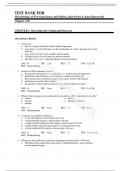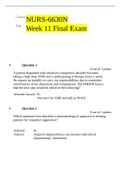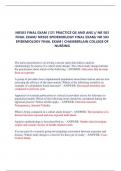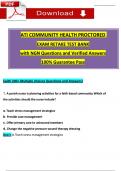Examen
BIOD 121 Module 2 Exam(V2)(Up-to-date, )/ BIOD121 Module 2 Exam / BIOD 121 Nutrition Exam 2: Essentials in Nutrition: Portage Learning (QUESTIONS & ANSWERS)
- Cours
- Établissement
BIOD 121 Module 2 Exam(V2)(Up-to-date, )/ BIOD121 Module 2 Exam / BIOD 121 Nutrition Exam 2: Essentials in Nutrition: Portage Learning (QUESTIONS & ANSWERS)
[Montrer plus]












